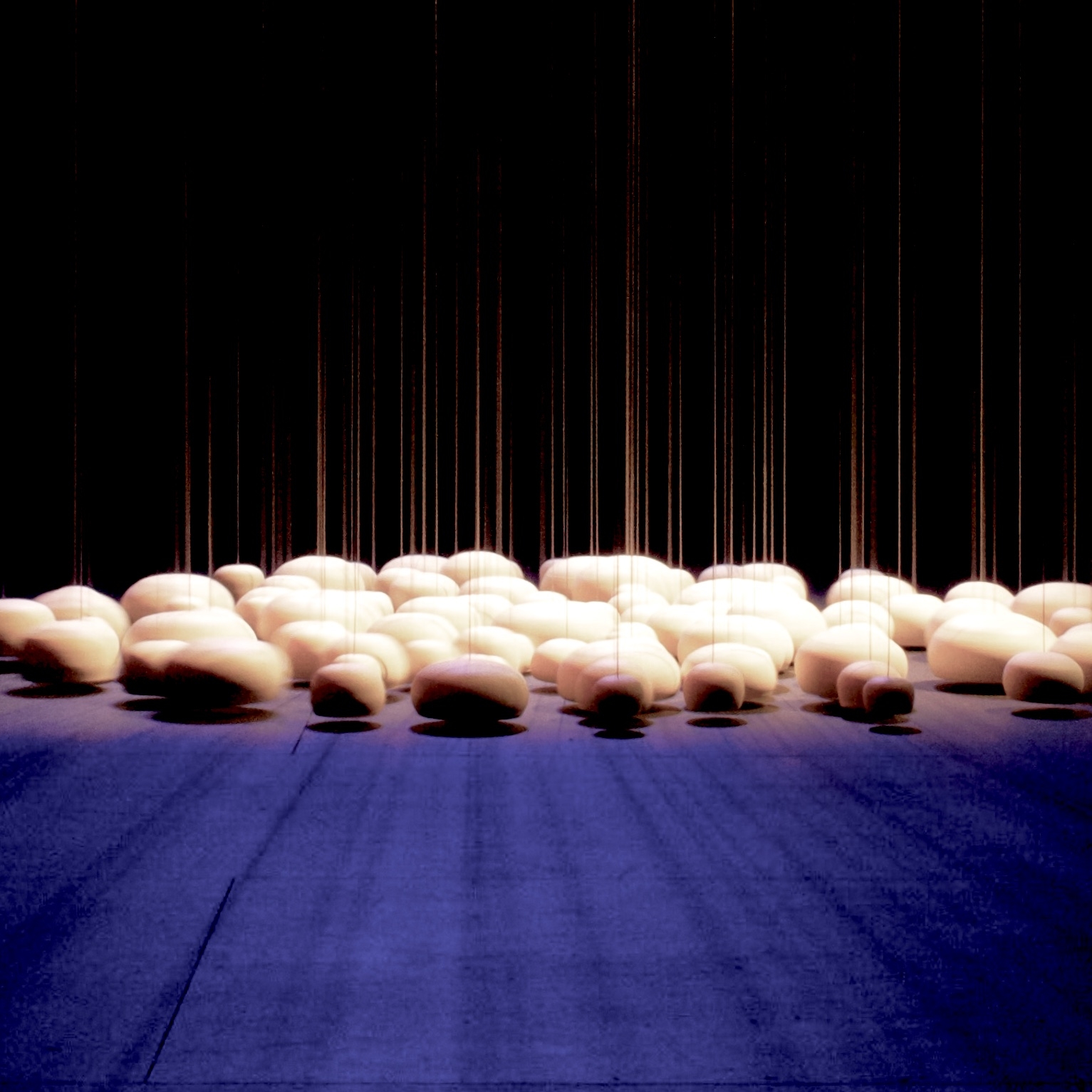Resonance
Resonance
Hand-thrown white stoneware bells with steel cables.
Quantities & dimensions variable, 2015.
About Resonance
Resonance is a kinetic sculpture that relies on moving air to activate movement in a series of clapper-less ceramic bells, causing them to gently bump against one another. The result is a complex and ever-changing pattern of sounds and movements.
Resonance installed at the Sheen Center for Thought & Culture, NYC, September 2015.
Artist Statement
The world around me inspires both intense curiosity and profound reverence. I am deeply interested in the complex network of interdependency that binds human beings to one another and to our environment. My creative practice explores and celebrates this mutuality.
Several years ago I became intrigued with the image of clapper-less bells, which cannot sound alone, but only when activated by an external contact. Bells and chimes are ancient instruments which date to Neolithic times.[1] Today, the ringing of bells is significant in many of the world’s major religions, including Christianity, Buddhism, and Hinduism. Bells mark the passage of time, inviting us to attentiveness and celebration.
In this project, each hand-thrown ceramic bell functions as a singular object: distinguished by the unique residue of the creative process, and the particular note and tone with which it sounds. At the same time, a single bell alone remains unrealized and incomplete, since it cannot resound until it comes into contact with others. This fundamental interdependency binds them together, yet preserves the singularity of each individual bell.
Together, the bells move and interact in patterns that are both repetitive and ever-changing. Their movement is affected by fans, ventilation systems, and even the motion of human visitors. It is influenced by the rotation of the earth and subtle movements within the building where they are installed. They nudge and bump and strike one another at varying angles with varying force, transferring energy and producing sound in surprisingly complex and nuanced ways.
It is my hope that this piece will encourage viewers to see and celebrate the interdependency that binds us to one another, to all living things, and to the earth on which we live.
Sarah Jane, August 2015
[1] Appropriately, the earliest known bells are made from ceramic, appearing in China in the early third millennium B.C.E. (Lothar Von Falkenhausen. 1993. Suspended Music: Chime Bells in the Culture of Bronze Age China. University of California Press, p. 132.)

